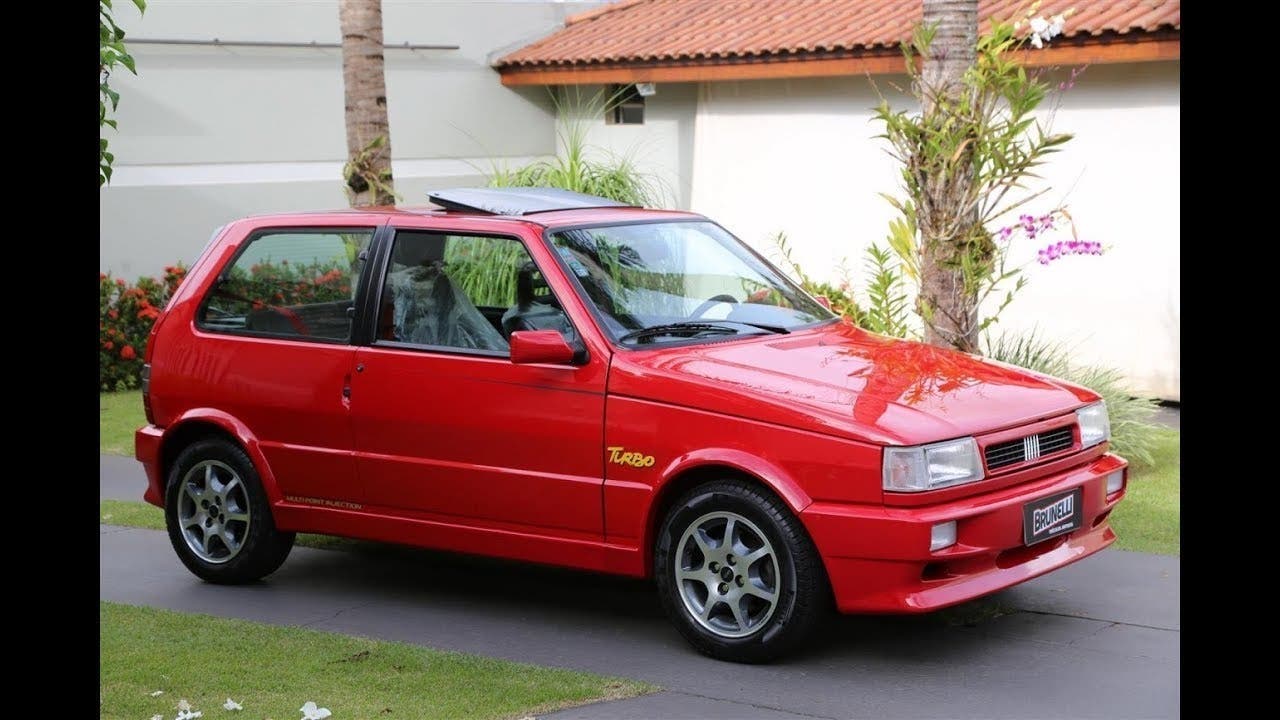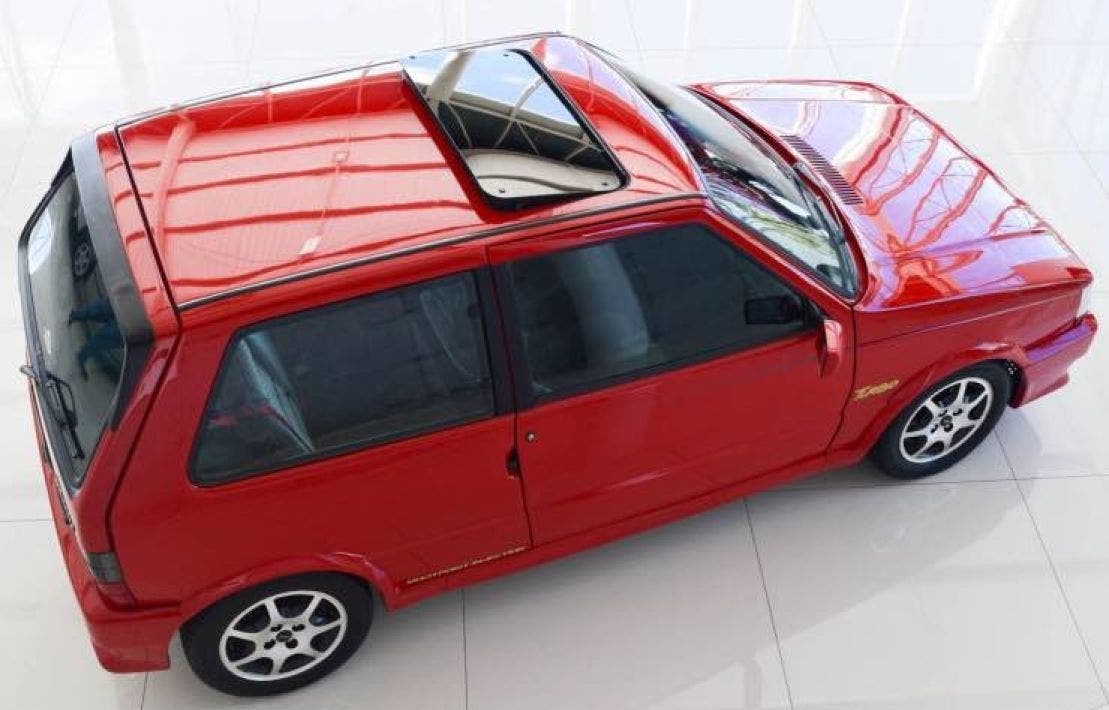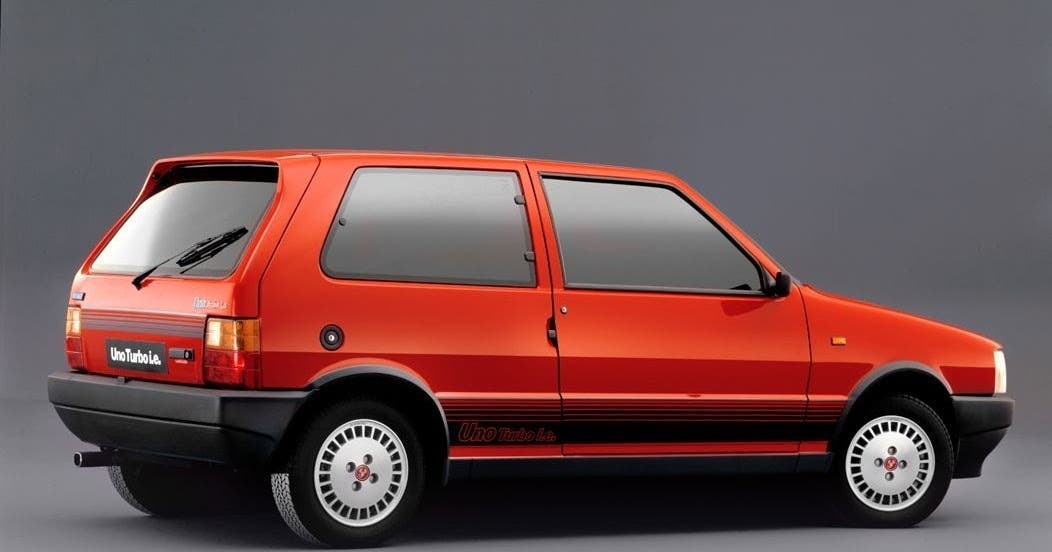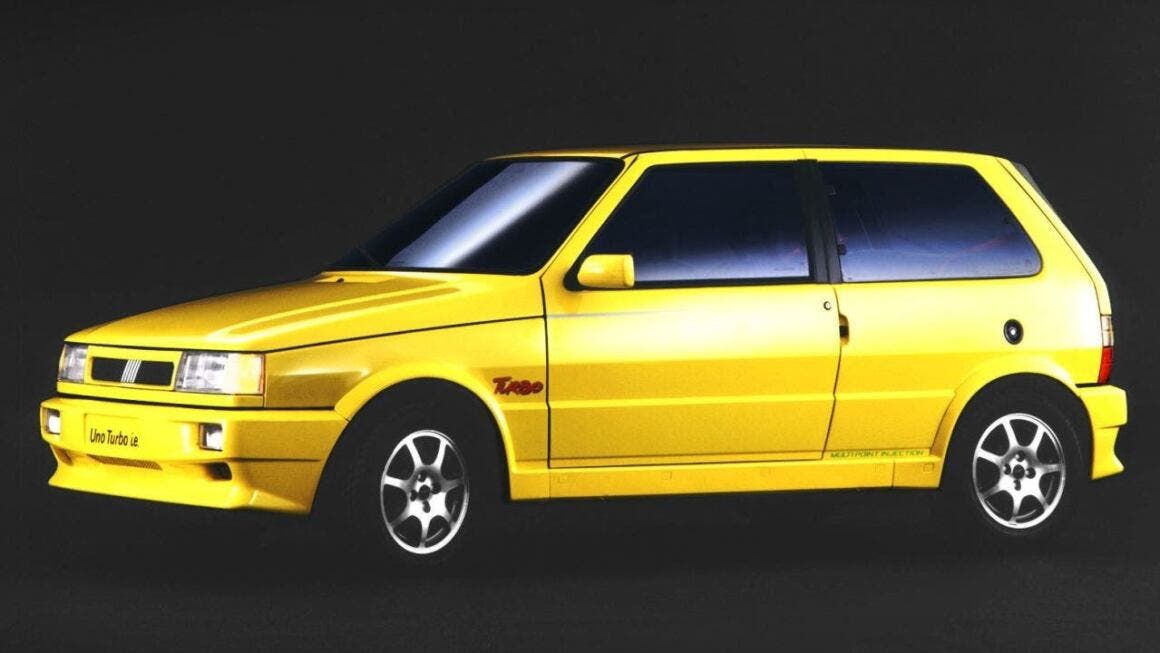A piece of history turns 30 years old. This car makes us reflect on what kind of times those were and what we have today. Currently, in the range of countless car brands, it’s normal to find turbo engines in compact sedans from Volkswagen, Chevrolet, Hyundai, Peugeot. But thirty years ago in Brazil, turbo was a rarity mainly reserved for imported sports cars. The exception? The legendary Fiat Uno Turbo.
Fiat Uno Turbo: 30 years ago it made its debut in Brazil

When Volkswagen launched the Gol GTI with Bosch electronic injection, it set a new standard in the Brazilian automotive industry. This step pushed all other manufacturers to abandon carburetors. However, in 1994, Fiat took a further step forward by importing the Sevel 1.4 engine from Italy and equipping it with a turbo with 0.8 BAR pressure. This is how the Uno Turbo arrived in South America, the first production car with a turbo engine in Brazil.
At the time, this engine developed 118 HP, impressive performance for the time. Today, these numbers might seem modest compared to the 130 HP of the 1.0 Turbo engine produced at Fiat’s Brazilian plant in Betim. All thanks to the progress achieved in production and the use of robotics.
The Fiat Uno Turbo marked a turning point in the Brazilian automotive landscape. Unlike the Gol GTI, whose injection technology was later updated, the Uno Turbo only became popular over the years, transforming into an icon and even a valuable collector’s item. Produced between 1994 and 1996, the Uno Turbo was never produced in large quantities, which makes every well-preserved specimen a small treasure in Brazil today, with notable values for a thirty-year-old car.

The Uno Turbo i.e., the European version, was launched as the sports version of the Fiat Uno, produced from May 1985 to 1994, to compete in the small sports car market, including the Renault 5 GT Turbo, Peugeot 205 GTi, and Golf GTI.

The 105 HP turbocharged 1.3 engine that this first version had pushed the Fiat to a top speed of 200 km/h with an acceleration from 0 to 100 km/h in 8.1 seconds. Later enriched with a turbocharger and multipoint injection, the total power reached, indeed, 118 HP, with a top speed of 204 km/h. Now, according to some rumors, it could be the new Grande Panda that takes the name of Uno in South America, although this is still unofficial news.

